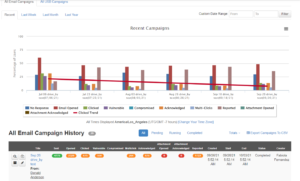How to Conduct a Phishing Simulation Test
Conduct a Phishing Simulation Test
A phishing simulation test is an exercise that mimics real-world phishing emails to educate employees about online behaviors and to assess knowledge levels related to phishing attacks. It’s an important part of security awareness training because it can help reduce risk, build threat resilience and create a security-aware organizational culture.
Cybercriminals use phishing attacks to steal sensitive information like passwords, bank account details and credit card data through malicious emails that pretend to be from a legitimate business or institution. These fraudulent attacks can also be used to distribute malware or spyware.

In order to minimize the risk of a phishing simulation test, organizations need to develop a robust strategy for preventing it. They must identify who is most at risk, understand how these risks can be exploited and implement an effective phishing simulation program to educate employees about the threat.
How to Conduct a Phishing Simulation Test
There are many phishing simulation tools available on the market that allow users to test their online behavior and assess their knowledge about phishing. Some are free while others are cost-effective. The key is finding a tool that allows for meaningful, controlled testing and is easy to manage. Generally speaking, a phishing simulation test should be conducted at least once a month. However, it can be conducted more frequently if necessary to meet the needs of the organization.
When an employee clicks on a phishing email, the action will be recorded by the security team. It can then be analyzed to determine the employee’s level of risk and their likelihood of future failure to recognize a phishing attack. This allows the security team to take appropriate steps, such as contacting the employee with further instructions.
What should the organization do with a person or group that repeatedly fails a phishing test? If a person or group is continually failing phishing tests, it can put the entire organization at risk. The organization must act in a responsible manner that is respectful of the person and not humiliate them.
After each phishing simulation, you will want to track how many people reported the phishing email and how many did nothing. These metrics can then be compared over time and can help the organization determine how effective their phishing simulation test is.
The goal of a phishing simulation test is to educate the employees about the dangers of phishing and social engineering, which is a major cause of cybersecurity breaches. If the organization is successful, it will increase employee awareness about these threats and reduce the chance of an attack occurring in the future. The phishing simulation test should also be conducted on a regular basis to ensure the employee’s knowledge continues to improve.